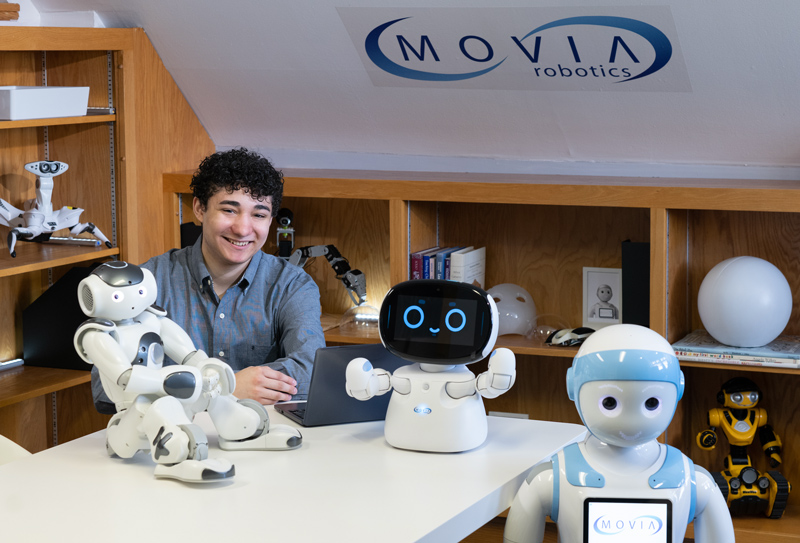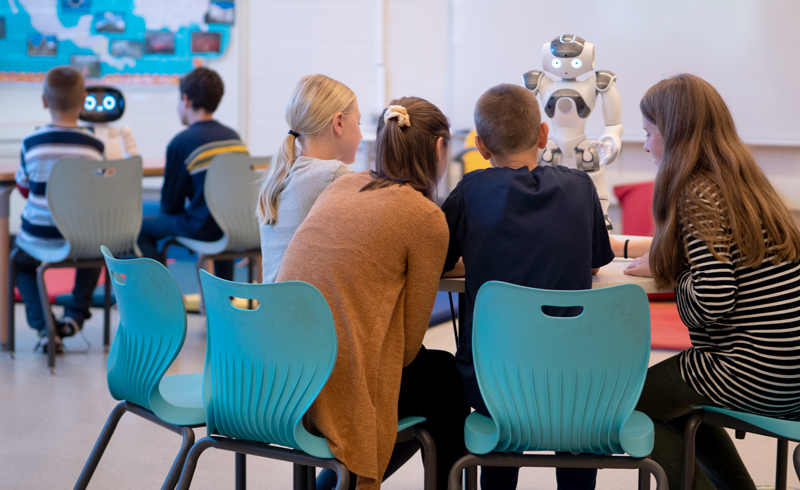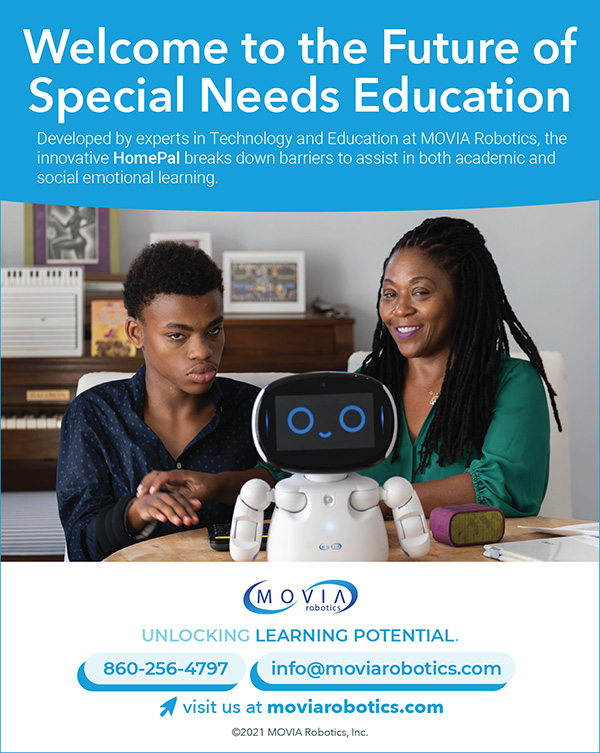Education is a tool to create responsible members of society and teachers have the duty to create an equitable learning environment to enable these students to reach that point. The challenge that many students on the autism spectrum face in the classroom is with social participation and collaboration, ostracization, and potential need of accommodations. The Individualized Education Plan (IEP) program exists to develop a suitable and accommodating educational plan for a child but even with academic accommodation through graduation from high school, autistic students face unemployment after high school at higher rates than their neurotypical peers. Studies have shown that a very high percentage of adults with autism find it difficult to gain full-time employment. If autistic people can have challenges with social ability, why can’t we create a culture of mutual understanding between neurotypical and autistic people and enable both to grow?

Josias Liam Reynoso at MOVIA Robotics headquarters in Bristol, CT
I am autistic and am currently studying Technology and Engineering. I am also an intern at MOVIA Robotics and am knowledgeable in its Robot-Assisted Instruction (RAI) system. In addition, I have worked at the Boys & Girls Club for five years as a youth development professional teaching technology course such as robotics, coding, and Computer Aided Design (CAD). I was named National Youth of the Year for Boys & Girls Clubs of America in 2020 and have advocated for autistic youth with that platform. As a technology educator, I aim to facilitate collaboration in the classroom and my model of technology education is one in which educators enable neurotypical and neurodivergent students to cooperatively ideate solutions while respecting each other’s individuality.
People often sense differences between each other and someone on the spectrum may face a snap situation or confrontation from a misunderstanding of mixed signals more often than their neurotypical peers. More conflicts between people or awkward social situations can separate a person from the group. As a child and even as an adult, I recall oftentimes being singled out in a group conversation. People would group into their own conversation, and I would only be in the conversation if I asserted myself to be forced into it. This leaves a sort of jagged conversation in which some people synergize, and one may be ignored.
Integration between neurodivergent and neurotypical people is necessary to reduce the divide between the two and reduce unemployment in autistic individuals. One reason why autistic people are hired less than neurodivergent people is simple. While an autistic individual may be professional, reliable, or fit for a position, they may be perceived or come across as different to the prospective employer when being themselves and not masking their autism resulting in a potential denied position. Everyday scenarios such as this set a precedent on autistic workers to mask their autism and conform to what neurodivergent people expect.
In a technical education class, for example, every creation made offers an opportunity for collaboration. Different students from different backgrounds are given tools to use to complete a task and must work together to find a solution. Take, for example, an arm on a robot. One student may want to use a claw with two appendages to pick something up and the other may insist on scooping up something from underneath. This creates a conflict between the students, but that conflict is an opportunity for compromise. Ultimately, the students are working towards the same goal, but are finding different ways of getting to the solution. These social interactions are manufactured by the educator and their use of their classroom and tools. The same is true and evident for collaboration between neurotypical and neurodivergent students. Instead of finding ways to separate autistic children from the rest, an active pursuit of inter-neurotype collaboration is needed.

Students collectively working together to engage with MOVIA’s RAI systems in the classroom
Children start to pick up crucial job skills early in life, even if they don’t realize it. Engaging a child in formal settings like volunteering, church activities, museums, or Boy or Girl Scouts can give them experience with interpersonal communication, following directions, completing tasks, and managing time. Robots and RAI can be beneficial for developing social skills. As kids reach the age where social play becomes more important for social development, many children with autism struggle to keep up. Robots have been used to help kids with autism learn how to share, take turns, and build other crucial social skills.
Tools and resources to facilitate interactions between neurotypical and neurodivergent individuals are important as they help decrease the divide that causes prejudice. Positive exposure to different people fosters acceptance of those people, but not all interactions between neurodivergent and neurotypical people are positive. Every child needs to learn these skills, but everyone learns at a different pace and benefits from different support. Children with autism often learn life skills best when they are explicitly taught about them. When one struggles with understanding social cues it can be challenging to decipher intent behind someone’s gesture or tone of voice, and if someone does not recognize or acknowledge that a person may have those differences, they will be more inclined to dismiss rather than understand.
Teachers not only have the duty to educate on their subject, but they also have the duty to teach a culture of mutual understanding. Raw subjects matter less than the growth experience they create in their students to develop into responsible understanding members of society.
For more information about MOVIA Robotics’ Robot-Assisted Intervention, please visit www.moviarobotics.com.






